
Concept explainers
How many
a.  c.
c.  e.
e.  g.
g. 
b.  d.
d.  f.
f.  h.
h. 
(a)
Interpretation: The number of
Concept introduction: Spectroscopy method is used to identify the structure of the molecule. It is based on the interactions between matter and electromagnetic radiations.
Answer to Problem 14.48P
The number of
Explanation of Solution
In
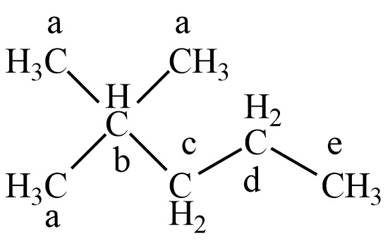
Figure 1
The number of
(b)
Interpretation: The number of
Concept introduction: Spectroscopy method is used to identify the structure of the molecule. It is based on the interactions between matter and electromagnetic radiations.
Answer to Problem 14.48P
The number of
Explanation of Solution
In
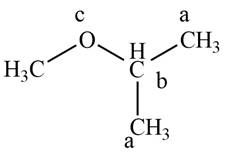
Figure 2
The number of
(c)
Interpretation: The number of
Concept introduction: Spectroscopy method is used to identify the structure of the molecule. It is based on the interactions between matter and electromagnetic radiations.
Answer to Problem 14.48P
The number of
Explanation of Solution
In
The number of
(d)
Interpretation: The number of
Concept introduction: Spectroscopy method is used to identify the structure of the molecule. It is based on the interactions between matter and electromagnetic radiations.
Answer to Problem 14.48P
The number of
Explanation of Solution
In
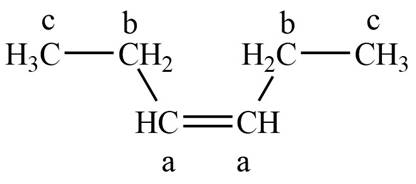
Figure 3
The number of
(e)
Interpretation: The number of
Concept introduction: Spectroscopy method is used to identify the structure of the molecule. It is based on the interactions between matter and electromagnetic radiations.
Answer to Problem 14.48P
The number of
Explanation of Solution
In
The number of
(f)
Interpretation: The number of
Concept introduction: Spectroscopy method is used to identify the structure of the molecule. It is based on the interactions between matter and electromagnetic radiations.
Answer to Problem 14.48P
The number of
Explanation of Solution
In
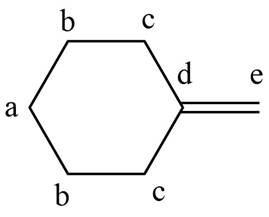
Figure 4
The number of
(g)
Interpretation: The number of
Concept introduction: Spectroscopy method is used to identify the structure of the molecule. It is based on the interactions between matter and electromagnetic radiations.
Answer to Problem 14.48P
The number of
Explanation of Solution
In
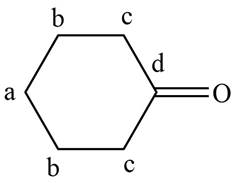
Figure 5
The number of
(h)
Interpretation: The number of
Concept introduction: Spectroscopy method is used to identify the structure of the molecule. It is based on the interactions between matter and electromagnetic radiations.
Answer to Problem 14.48P
The number of
Explanation of Solution
In
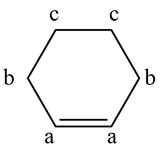
Figure 6
The number of
Want to see more full solutions like this?
Chapter 14 Solutions
Package: Loose Leaf for Organic Chemistry with Biological Topics with Connect Access Card
Additional Science Textbook Solutions
General, Organic, and Biological Chemistry - 4th edition
Human Biology: Concepts and Current Issues (8th Edition)
Campbell Biology (11th Edition)
Organic Chemistry
Loose Leaf For Integrated Principles Of Zoology
- help 20arrow_forwardProvide the drawing of the unknown structure that corresponds with this data.arrow_forward20.44 The Diels-Alder reaction is not limited to making six-membered rings with only car- bon atoms. Predict the products of the following reactions that produce rings with atoms other than carbon in them. OCCH OCCH H (b) CH C(CH₂)s COOCH མ་ནས་བ (c) N=C H -0.X- (e) H C=N COOCHS + CH2=CHCH₂ →→arrow_forward
- 3) Draw a detailed mechanism and predict the product of the reaction shown? 1) EtMgBr 2) H3O+arrow_forwardHow to draw the mechanism for this reaction?arrow_forward> H₂C=C-CH2-CH3 B. H₂O Pt C. + H2 + H₂O H D. 16. Give the IUPAC name for each of the following: B. Cl Cl c. Cl Cl 17. Draw the line-angle formula for each of the following compounds: 1. phenol 2. 1,3-dichlorobenzene 3. 4-ethyltoluene < Previous Submit Assignment Next ▸arrow_forward

 EBK A SMALL SCALE APPROACH TO ORGANIC LChemistryISBN:9781305446021Author:LampmanPublisher:CENGAGE LEARNING - CONSIGNMENT
EBK A SMALL SCALE APPROACH TO ORGANIC LChemistryISBN:9781305446021Author:LampmanPublisher:CENGAGE LEARNING - CONSIGNMENT

